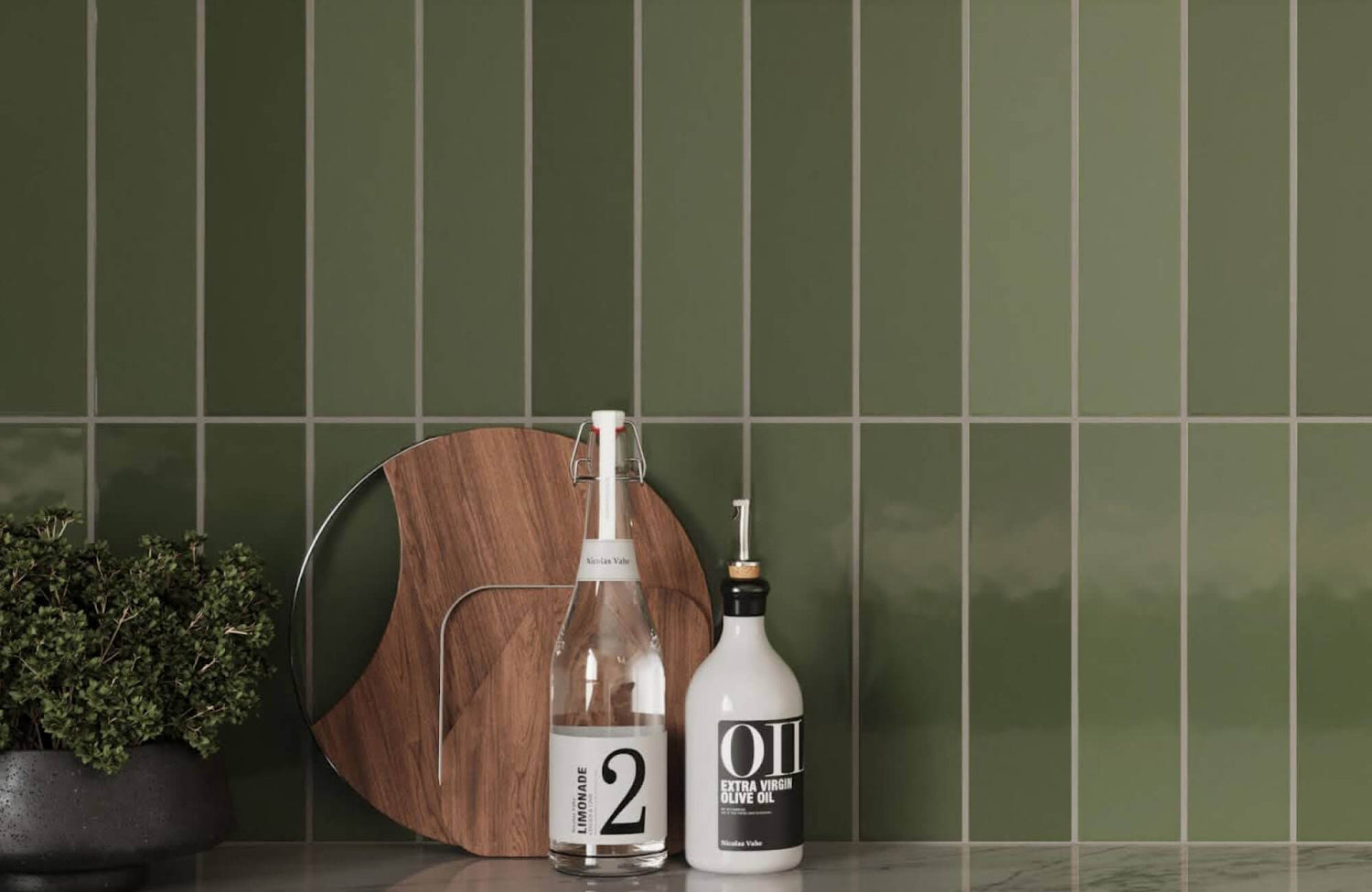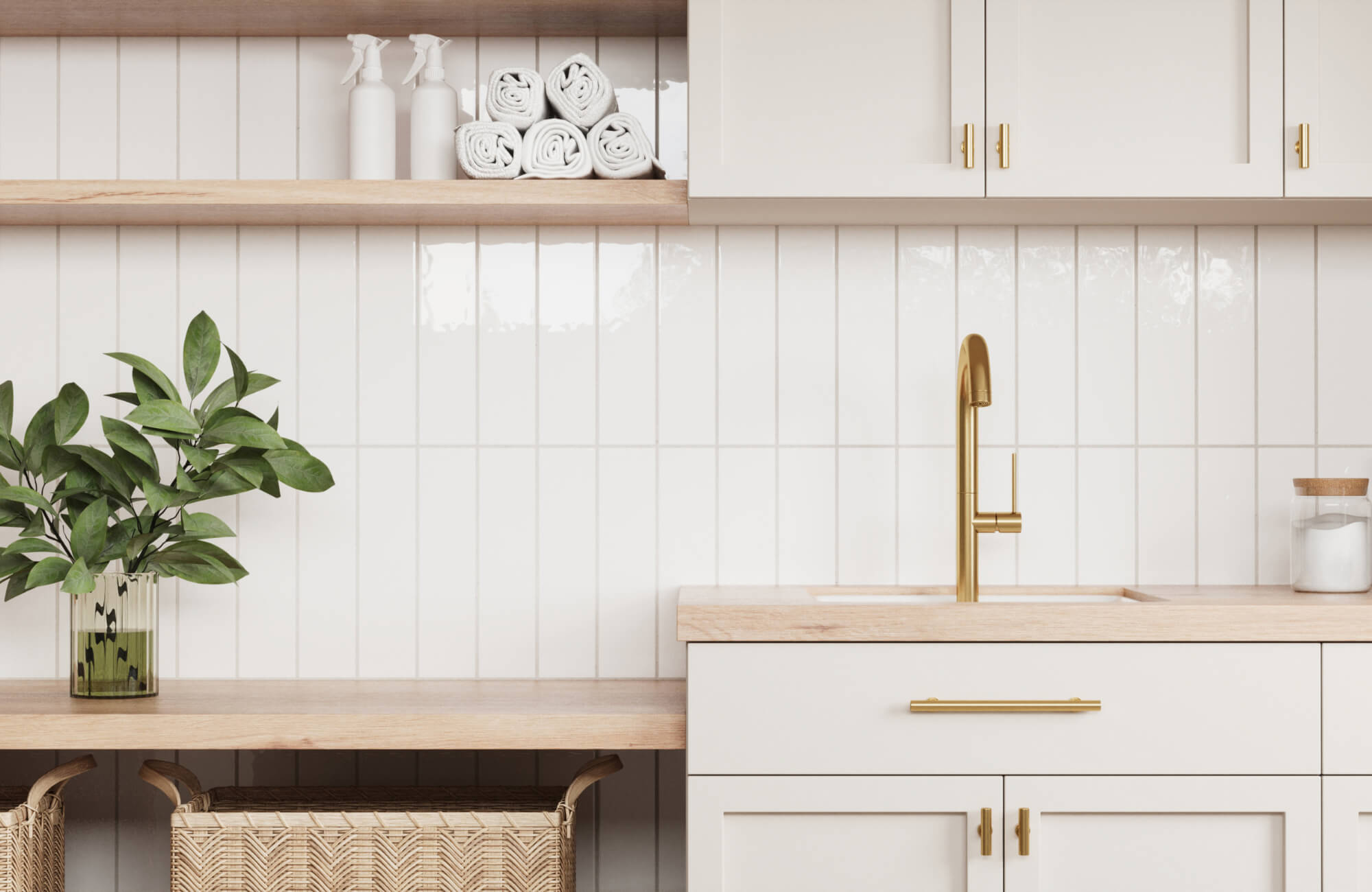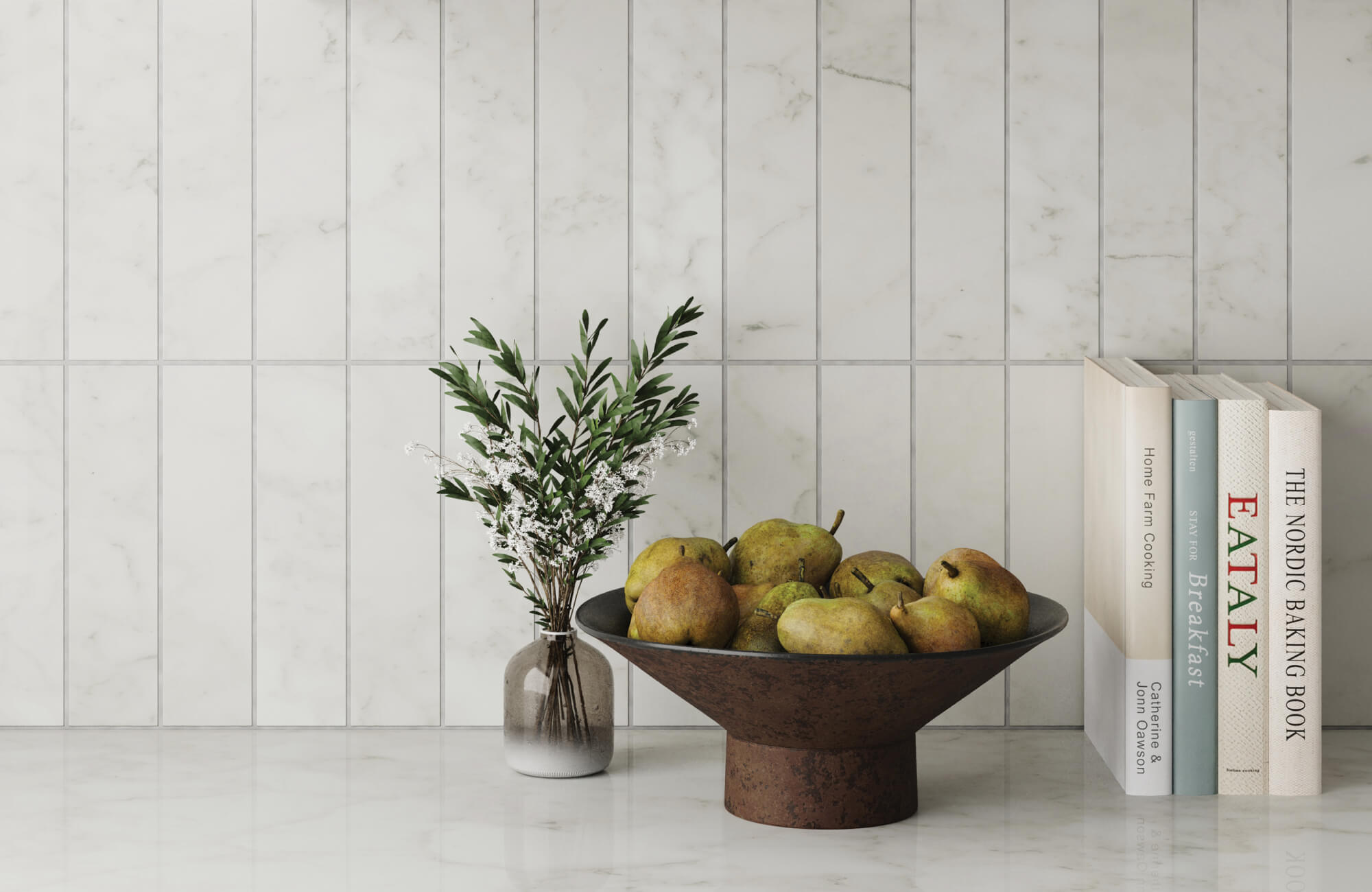Despite subway tile being a favorite in design circles, there remains a treasure trove of lesser-known facts about it. Known for its practicality, timeless appeal, and versatility across a range of interior styles, subway tile continues to be a go-to choice for both classic and contemporary spaces. But what exactly defines a subway tile? And what's the story behind its origin? Some of these details aren’t as widely known as one might expect. After thorough research, here are seven intriguing insights about subway tile that may surprise you.

The Origins Of Subway Tile Can Be Traced To Manhattan's Subways
Subway tile, as you might have guessed, first made its appearance in an iconic location: the subway stations of New York City. Introduced during the subway's inauguration in 1904, designers Christopher Grand La Farge and George C. Heins faced a complex challenge to create a surface that was easy to clean and, at the same time, exuded a sense of safety and familiarity for first-time underground commuters. Their ingenious answer was to use tiles with subtly curved edges and a shiny finish, ensuring that the subway stations weren't just hygienic and sleek, but also well-lit and welcoming.
Visually, this choice was just as impactful. The glossy white surface gave the stations a sense of elegance and modernity that aligned with the forward-looking spirit of the new transportation system. These early design decisions set the tone for the tile's identity in architecture, elevating what could have been a purely utilitarian surface into something enduringly stylish. Over time, this foundational design language would influence both public infrastructure and residential interiors, cementing subway tile as a timeless visual cue of structure, order, and quiet sophistication.

The First Subway Tile Can Still Be Seen In An Abandoned Station
For those with a passion for design and history, the original subway tiles can still be seen in a somewhat secret location: New York City's abandoned City Hall subway station. This historical gem is not typically accessible to the public, but the New York Transit Museum does offer guided tours for those eager to explore. Adventurous locals, however, sometimes stay on the 6 train after its final stop at the Brooklyn Bridge, allowing them to catch a brief, ghostly glimpse of the old station as the train loops through it.
City Hall station is a masterpiece of early 20th-century transit design, with curved platforms, arched ceilings, and decorative flourishes that highlight the craftsmanship of its era. The original white subway tiles remain intact in parts of the station, serving as a time capsule of design decisions made over a century ago. These surviving installations provide a rare, tangible connection to subway tile's origins, offering not just a glimpse into design history but also into how architecture once played a role in elevating everyday public spaces.

The Cleanliness Craze Sparked the Rise of Subway Tiles
Ceramic subway tiles arose out of a Victorian-era fixation on cleanliness. Because of their glossy, glazed finish, they’re stain-resistant, easy to clean, and reflect light. They quickly earned a reputation for being utilitarian and sanitary, and became the wall covering of choice elsewhere, from baths and kitchens to butcher shops.
Nowadays, these same properties make them a practical choice for walls of modern kitchens, baths, and more. In the photo above, for example, you can see how a clean vertical layout using elongated subway tiles contributes to a bright, minimal, and elegant laundry space. The featured tile is Edward Martin’s Madilyn 3x12 Matte Ceramic Tile in Pearl, a soft, off-white with muted tone and velvety matte finish, which blends utility with contemporary calm, making it a smart and stylish interpretation of the classic subway tile ideal.

Subway Tiles Are More Than Just 3x6 Rectangles
What do we mean when we talk about subway tiles? It's not as straightforward as you might think. Traditionally, if you mentioned subway tile, many would picture a classic rectangular tile, typically measuring three by six inches. However, the scope of what constitutes subway tile is broadening. Today, any tile that maintains a length twice its width usually falls under the category of subway tile.
Sizes now range well beyond the standard. Smaller options like 2x4 and 2x6 create a tighter, more detailed layout, while longer formats such as 3x10, 3x12, and even 4x16 offer a more contemporary, elongated aesthetic. This expanded definition of subway tile is gaining popularity, where a taller, more modern format is used to striking effect. Take, for example, the Teagan 3x12 Glossy Ceramic Tile in Moss, as displayed in the photo above, its rich, earthy green brings depth and tranquility to the space. This elongated tile not only redefines the subway look but also elevates the atmosphere with its luminous finish and nature-inspired hue. It’s a perfect example of how tile size and color can be reimagined to suit contemporary tastes while still nodding to tradition.

Subway Tiles Aren't Limited to One Material Anymore
If you're under the impression that subway tile is limited to its material composition, it's time to expand your perspective. Officially, subway tile is described as a thin, low-fired, glazed ceramic tile. However, a fascinating piece from the Washington Post reveals that the earliest subway tiles used in New York City's subway were made of white glass. Today, the term "subway tile" embraces a plethora of materials, including porcelain, glass, and natural stone.
Ceramic
To begin with, ceramic is the most traditional and widely used material for subway tiles. Its non-porous, lightweight construction and easy-to-clean glazed surface make it a natural fit for vertical applications such as kitchen backsplashes, shower walls, and bathroom surrounds. Ceramic subway tiles are also cost-effective and available in an endless variety of colors, shapes, and finishes. Although not typically used for flooring due to its softer composition, ceramic remains a go-to material where style and wall performance are the priority.
Porcelain
For more demanding applications, porcelain subway tiles provide a tougher alternative. They are denser and fired at higher temperatures, which gives them added strength, durability, and moisture resistance. These qualities make porcelain especially well-suited not just for walls, but also for busy or wet environments such as bathroom floors, mudrooms, and shower enclosures, areas where long-term performance is essential.
A great example of this versatility is shown in the picture above, where porcelain subway tiles wrap the shower walls and ceiling in a continuous, spa-like finish. The featured tile is the Natasha 2x6 Matte Porcelain Tile in Bone, a soft, earthy neutral that brings warmth and sophistication to the space. Its compact 2x6 format and matte surface evoke a handmade feel, while the durable porcelain body stands up beautifully to humidity and daily use. This combination of subtle texture and high performance makes it a smart choice for elegant, functional interiors.
Glass
For a modern and luminous effect, glass subway tiles introduce a sleek, reflective surface that enhances light and brings depth to smaller or darker spaces. They're often used for accent walls or backsplashes where visual impact matters most. However, despite their beauty, glass subway tiles are more fragile than other options and require careful installation to prevent visible adhesive and edge chipping. Their higher price point and installation complexity also make them less practical for large-scale or budget-sensitive projects.
Natural Stone
Finally, for those seeking texture and timeless elegance, natural stone subway tiles such as marble, travertine, or limestone offer an artisanal, one-of-a-kind look. They are especially striking in feature walls, fireplace surrounds, or powder rooms where their organic character can take center stage. However, natural stone is porous and requires sealing to protect against moisture and staining, which adds a layer of maintenance. In wet areas like bathrooms, proper sealing and care are essential to preserve the beauty and function of the stone.
Grout Color Can Transform the Look of Subway Tiles
Although much attention and budget may go towards selecting the perfect tiles, the importance of grout should not be underestimated. The choice of grout can dramatically transform the appearance and style of your subway tile installation. Grout also comes in a spectrum of shades, from dark to light, and each color can enhance or mute the visual impact of the tile, depending on the desired effect. This makes selecting the right grout color a critical decision in your tile design process. In addition to color, consider grout line thickness. Thinner lines offer a cleaner, more modern look, while wider lines can add rustic or handcrafted character. It's a small detail, but one that can significantly influence how cohesive, bold, or subtle your final space feels.
Some of the most effective design outcomes also come from strategic tile and grout pairings. A classic example is white subway tile with dark gray or black grout. This high-contrast look emphasizes the grid layout, giving spaces a bold, graphic edge that's popular in industrial or modern farmhouse styles. On the other hand, pairing white tile with white or light gray grout creates a seamless, airy feel that suits minimalist or Scandinavian-inspired interiors. For a softer, warmer aesthetic, beige or light brown tiles paired with matching grout offer a tonal, understated look, while colored tiles with neutral grout allow the hue of the tile to take center stage without overwhelming the eye. Each pairing influences not only style but also how the tile interacts with surrounding finishes and light.

Alternative Subway Tile Patterns Can Transform Spaces
When you think of subway tile, the classic horizontal "brick" layout likely comes to mind. However, the versatility of subway tile allows for much more creativity in its arrangement. Did you know that you can install subway tiles vertically, or even in intricate patterns like herringbone or a geometric L-shape? These alternative layouts can dramatically alter the visual dynamics of a space, offering fresh and modern takes on the traditional subway tile look.
In the bathroom image above, a herringbone floor installation creates a sense of movement and elegance, perfectly complementing the room’s arched window and soft natural palette. This look is achieved using a matte ceramic tile in a warm beige, specifically the Marsden 3x10 Matte Ceramic Tile in Almond. Its elongated form lends itself beautifully to this kind of pattern play, proving that subway tiles aren’t just for walls and that the way they’re laid can be just as impactful as the tile itself.
To help you visualize how layout and color choices will look in your own space, Edward Martin also offers an augmented reality (AR) tool that lets you preview tiles in real time so you can experiment with patterns and placements before making a final decision.
Why Subway Tile Still Deserves the Spotlight
Subway tile, a beloved staple in the design world, carries a history as rich and layered as its applications in modern interiors. From its origins beneath the bustling streets of Manhattan to its evolution into a symbol of cleanliness and simplicity, subway tile has transcended its utilitarian roots to become a versatile element in various spaces. Whether it's the classic gleam of ceramic in a kitchen backsplash or the textured elegance of porcelain in a bathroom, the adaptability of subway tile continues to make it a favorite. As we've explored its diverse patterns, materials, and uses, it's clear that the humble subway tile offers endless possibilities for creative and functional expression in both residential and commercial environments.
If you’re feeling inspired but unsure where to begin, our Design Services team is here to help. Whether you're choosing between materials, exploring layout patterns, or coordinating grout and finish options, we offer expert guidance to bring your subway tile vision to life.

Frequently Asked Questions
Subway tile continues to be a staple in both residential and commercial design, appreciated for its balance of classic style and modern flexibility. Beyond the insights covered in our article, here are a few additional questions people often ask when considering subway tile for their spaces:
1. Can subway tile be used outdoors?
Although most traditional subway tiles are intended for indoor use, some materials, particularly porcelain, can be suitable for outdoor applications due to their low water absorption and durability. Be sure to check the tile’s specifications and frost resistance rating before using it in an exterior setting.
2. Is it okay to mix subway tiles with other tile types?
Yes, mixing subway tiles with other shapes or materials (like hexagon or mosaic tiles) can create visual interest and zone differentiation in open-plan spaces. Just make sure the color palette and finish complement each other to maintain a cohesive look.
3. How do I prevent grout from discoloring over time?
Grout can discolor due to moisture, dirt, and cleaning products. To prevent this, consider sealing your grout after installation and cleaning it regularly with pH-neutral products. Some also opt for epoxy grout, which is more resistant to stains and doesn’t require sealing.
4. Are beveled subway tiles still in style?
Beveled subway tiles remain popular, especially in traditional and transitional designs. Their angled edges catch light differently than flat tiles, adding subtle texture and dimension. They’re especially effective in monochromatic color schemes where texture becomes the visual focus.
5. Can I install subway tile on a curved or irregular surface?
Yes, but it depends on the flexibility of the tile and the skill of the installer. Smaller-format subway tiles (like 2x4 or 2x6) are easier to work with on curved surfaces than larger tiles. A flexible adhesive and careful tile spacing can also help achieve a clean finish on columns, arches, or rounded walls.








